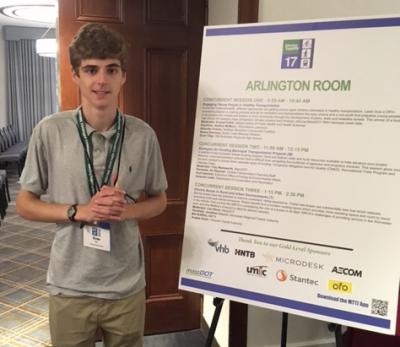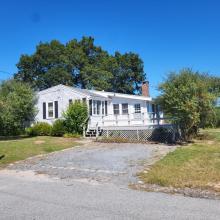Half of bicycle accidents cause injuries, students say
Fifty percent of bicycle accidents in the tri-town result in injury. That’s double the injurious crash rate of most other small towns in Massachusetts in Bristol or Plymouth counties.
What’s more? According to the analysis of at least one high school student, more biking accidents happen in the evening (specifically between 3-6 p.m.), rather than the morning. A third of bicycle accidents in the tri-town occur on roads that see less than 1,000 cars per day.
Old Rochester Regional High School’s Advanced Placement statistics class reached those statistical conclusions earlier this year, as part of a real-life project designed by Friends of the Mattapoisett Bike Path president Bonne Desousa.
For Desousa, the project was two things; the first, a opportunity to educate students on bike safety, whether they were riding bikes or in their cars. Then, there was the chance for the students to perform as actual statisticians; whose input might be able to influence the direction of public policy.
Desousa explained that she had been carrying out her own research for the Massachusetts Bicycle Coalition. “They'd been doing a project to document all bike fatalities in Massachusetts, and I helped out. Doing the research is really hard."
Around the same time, a bicyclist in Freetown was struck by a car and critically injured. "It happened around the same time that an animal abuse case in Freetown broke," DeSousa said. "So it didn't really get much attention in the media at all.”
DeSousa said that she'd felt slightly guilty. "Here I was telling people to get out and bike, was I really doing the right thing? People need to know what really happens on the road, and learn from the mistakes that have happened."
The two events merged in Desousa’s head; the students could tackle bicycle crash data, and learn about bike safety at the same time.
With that thought in her mind, she knew a good place to begin the education; Old Rochester Regional High School. She approached Statistics teacher Melanie Kellum with the project idea. At the same time, she approached the Massachusetts Department of Transportation, whose input she was hoping for. A MassDOT employee held regular videoconferences with the students and offered input to them throughout the project.
Kellum said that initially, she was hesitant about offering such a massive project to her students, particularly as senior statistics students had already left school when the project began. “They’re great students, but they’re still high-schoolers,” she explained. “I was worried that this project would be too much for them.”
Kellum and Desousa worked together to smooth out the project. The students were asked to analyze bicycle crash rates and trends; they were also asked to break down other factors, such as time of day, population density, and type of road that the accident occurred on. Eleven students chose to take the bicycle data project on; some worked in groups, others individually, but all presented their reports to the class, as well as Kellum, Desousa and a member of the Massachusetts Department of Transportation.
The projects they turned in were detailed and labor-intensive; when Kellum tried to demonstrate one, the 90-slide Powerpoint presentation froze her laptop. “The students worked incredibly hard,” she said, noting that several had worked at the project not only during class time, but during study periods and at home.
The hard work poured into the project also provided the chance, for one student, to win a $1,000 scholarship and present his findings in front of the Massachusetts Department of Transportation.
Evan Tilley, who was a junior when he completed the project, won $1,000 in scholarship money. Desousa arranged the scholarship ahead of the project; $500 was put up by Arbella Insurance and a further $500 supplied by Dunn Insurance.
“It was the largest project I ever worked on,” Tilley wrote of his winning entry. “I found this project extremely valuable, because I experienced a little of what an actual statistician might do for work.”
Tilley also won the chance to present his findings in front of the Massachusetts Department of Transportation. "It was a symposium, and there were several different presenters available. [Tilley] was one of them, and almost eight-hundred people stopped in to see his presentation," Kellum said.
The education project is spreading; Fairhaven High School's statistics class will be participating this year, and DeSousa is seeking out other interested schools.
DeSousa said she's also looking into a new set of statistics for the classes to work with. "A national safety report came out in July, that lists all the bike fatalities throughout the country," she explained. "Fatality research is much better than injury research, because when someone dies, every piece of evidence is recorded. It makes the data much more reliable, and much less spotty."













